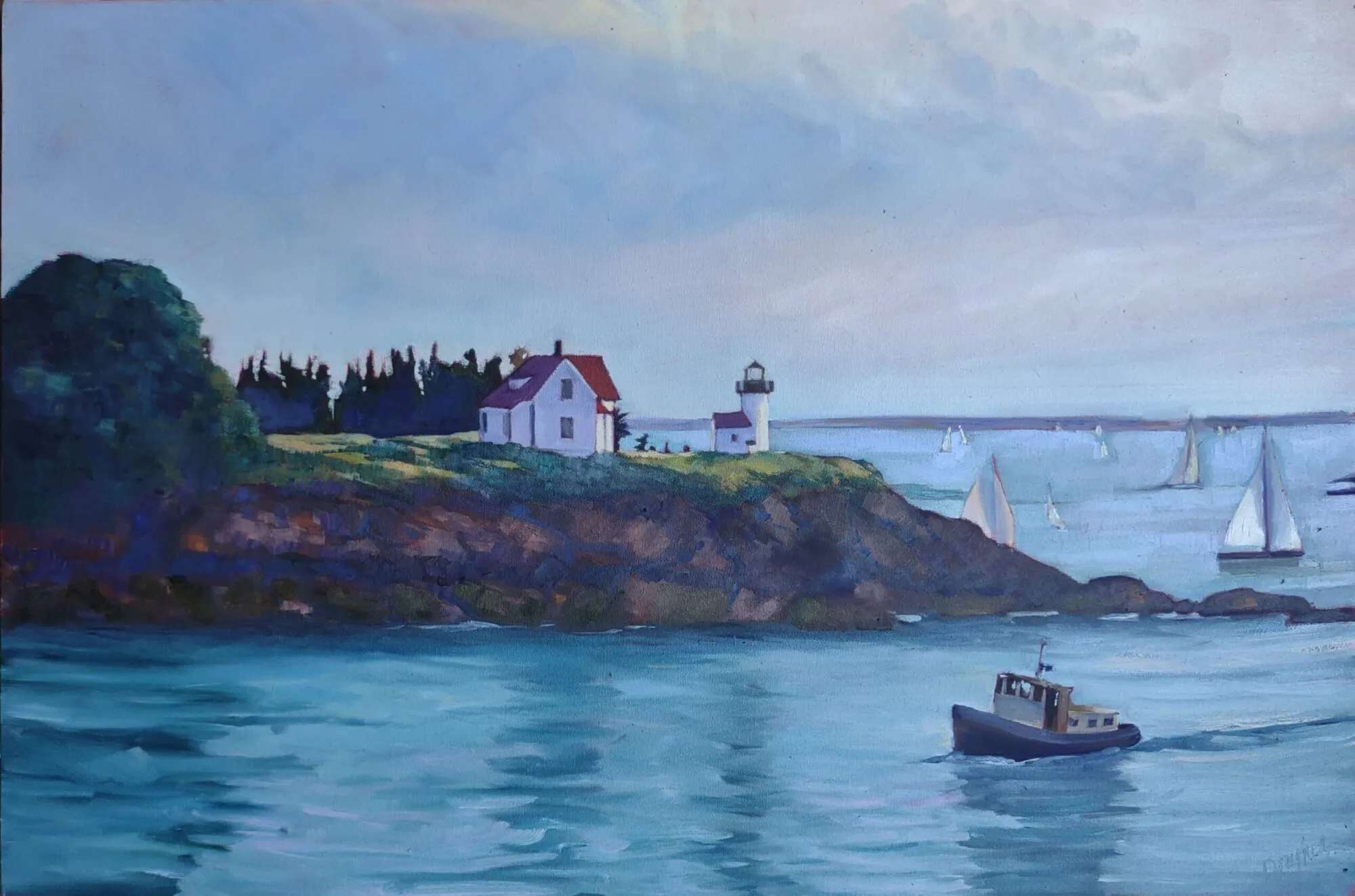 |
| The Red Truck, oil on canvasboard, Carol L. Douglas |
I believe that creativity rests less on freedom than on structure. I’m not the only person who’s discovered that genius requires discipline: from this Navy SEAL asserting that everything starts with making your bed to Mason Currey’s Daily Rituals: How Artists Work, the idea permeates current thought on the creative process.
| Portrait of the Artist’s Studio. If you’re looking for the exotic air of the sereglio in my studio, you have come to the wrong place. |
Writers and artists are frequently asked how we make meaningful work while earning a living. Currey set out to amass as much information as he could find about the routines underlying successful careers in the arts. Several of his common themes resonate with me.
A workspace with minimal distractions. People often want to stop and see my studio, and they’re always disappointed. It is not an ‘arty’ place. It’s a practical workspace, not much different in form from my wood shop. My most successful artist friends concentrate on having their stuff where they need it, even when the space is tiny and appears to be overflowing.
For me, the most difficult part of working out of my house is that I’m easily found.
 |
| I walk every day, unless the temperature drops below zero and the wind is blowing, or the snow is too deep. |
A daily walk. I actually take two walks every day—the first one first thing in the morning, the second in late morning or at lunch time. This is a lifelong habit. Walking is my time to think, reflect, and pray. I rapidly sink into ennui when deprived of it.
As time-consuming as it is to walk several miles a day, my productivity actually drops if circumstances keep me from exercising.
Accountability. Unlike a writer, the visual artist can’t count brushstrokes or square inches of work. But we can assure that we work regular hours. I have noticed that this helps me get in the groove of painting faster. I’m convinced that the brain recognizes routine and appreciates it.
 |
|
This is jeweler Jennifer Jones doing some of the busywork in her job—sorting findings by color.
|
A clear dividing line separating our important work and busywork. Most artists spend half their work day doing things like marketing, accounting, taxes, inventory control, etc. Unfortunately, we use our computers for that, which sucks us inevitably into the world of email and Facebook. Our ancestors may have spent a ton of time doing busywork, but at least it didn’t ding at them morning, noon and night.
I’ve noticed that I’m doing less sketching since I’ve gotten a smart phone. It’s too easy to pull it out to check messages and then get drawn into it.
A supportive partner. My husband and I have been happily married for almost 35 years. About two years ago, we had a heart-to-heart talk about my career and where it was going. It was obvious that getting out of Rochester was the next logical career step for me. He never hesitated. “Go,” he said, and I am. That’s amazing loyalty and support.
| It used to be that painting en plein air saved you from distraction. Sadly, we now carry our distraction around with us. |
Limited social lives.You know that arty guy you see at every opening? I wonder when he has time to get any work done.
Most successful artists I know are to some degree antisocial, and yet our work is essentially communication. People don’t just feel that they know us, they do know us, and we have to honor that. But like anyone else working for a living, we need time to actually get stuff done. I love teaching art and talking about art, but during the day I want to be busy making art.
Let me know if you’re interested in painting with me on the Schoodic Peninsula in beautiful Acadia National Park in August 2015. Click here for more information on my Maine workshops! Download a brochure here.
